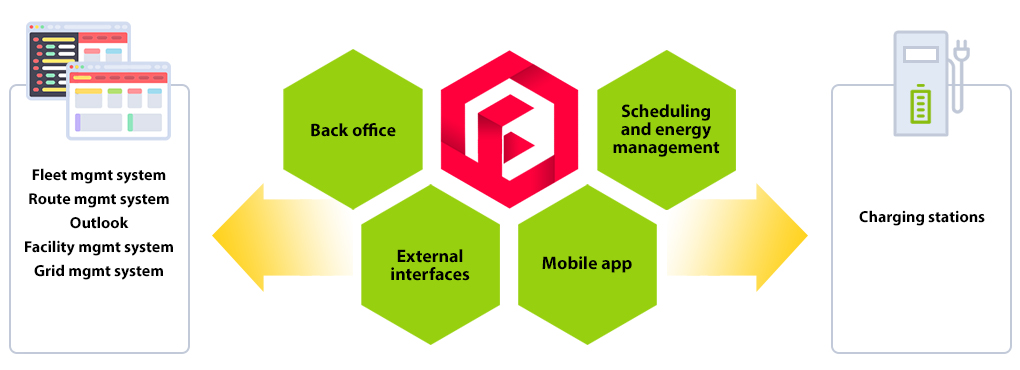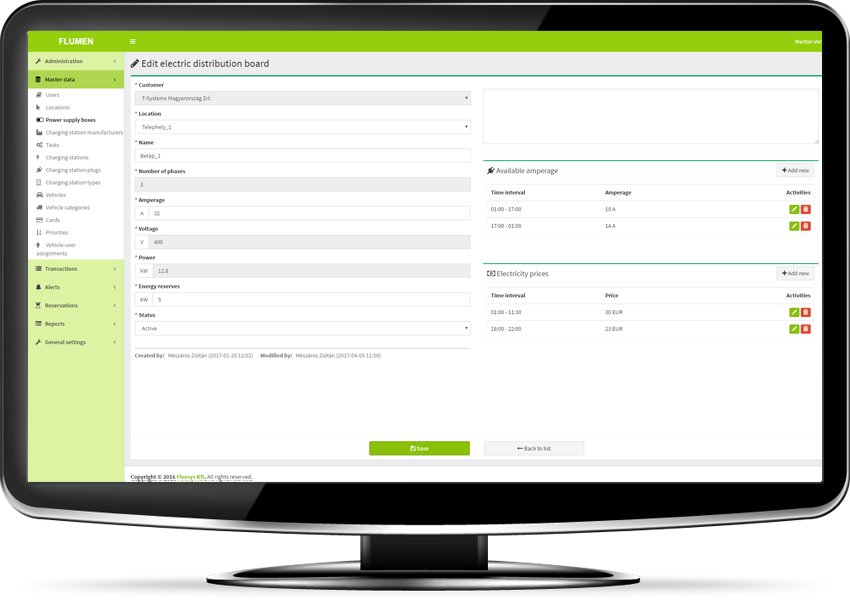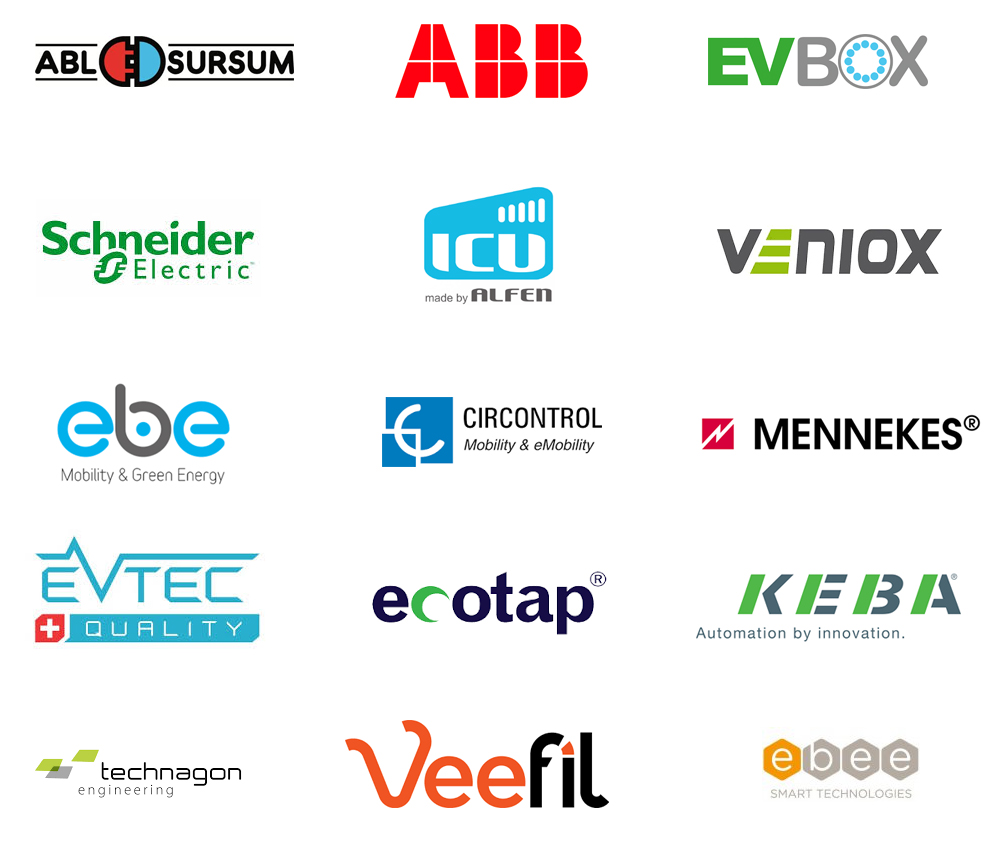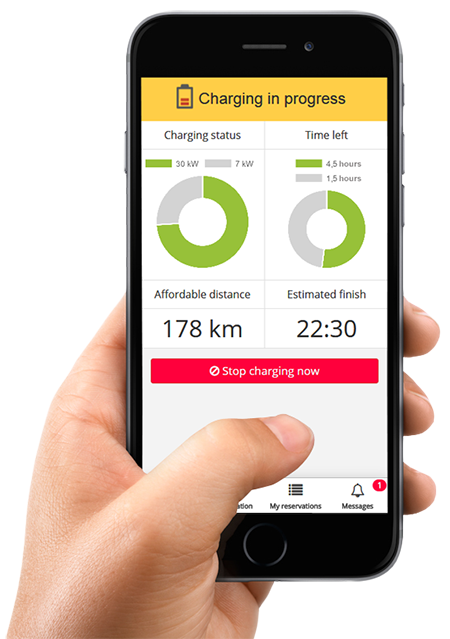System elements

Charging reservations arrive from an external system (e.g. fleet management, root management, Outlook) through standard interfaces, from the Flumen mobile app (ad hoc reservations), or from the Back office.
As the reservation arrives, the Artificial Intelligence supported scheduling module calculates the necessary kW amount, and the duration of charging. Then calculates the most optimal charging order, considering the requested departure times, the capacity of the local electric distribution board, and a lot of other parameters set in the Back office.
After calculation, the reservation data (time, charging plug number) is sent back to the user's mobile app. If the reservation can't be fulfilled, the user has the possibility to change it, or sign up to a Waiting list.
When the users arrive to the parking garage, they plug in their cars to the specified connector, and identify themselves by reading the QR code of the connector with their mobile app (or let the station read their RFID smart card).
Flumen's Back office directly controls charging stations's power output on each plug according to the charging schedule. The Back office continuously receives status from the charging stations.
If a new reservation arrives, which requires re-scheduling an in-progress charging session, the system communicates the conflict to the re-scheduled user, allowing to choose from complete charging and later finish or less charging and exact finish.
Flumen notifies the users via the mobile app when the charging of their vehicle is ready.

The Artificial Intelligence controlled module continuously calculates the best possible scheduling, controls the power output ot charging plugs, and keeps an eye on their status.
Scheduling calculation is based on:
The module works according to the rules and strategies set in the Back office. The available charging strategies:
First come first served is the default strategy, which supports to charge each vehicle as soon as possible.
Economic - optimizes the charging sessions to the cheapest time intervals within the reservation start-end dates.
Green - optimizes the charging sessions to the time intervals within the reservation start-end dates when green energy is available.

Management of the system is done by the fleet managers of the enterprise using the cloud based Back Office. The web based user interface enables to manage master data, reservations, and to check charging statuses, potentional failures of the stations.
Fleet managers can get instant status of the charging stations by useful dashboards.
Flumen provides standard interfaces towards enterprise systems and charging stations.
If the enterprise use systems for fleet management, it's possible to feed Flumen: vehicle master data, user data, available amperages, electricity prices, reservations.
Flumen is compatible with any charging station which supports Open Charge Point Protocol (OCPP) version 1.5, 1.6, or 2.0. Using OCPP, Flumen can automatically communicate with the charging stations, and control them.


Employees can send ad hoc reservations by filling out a form. When charging, they can see the status of their session.
The mobile app also acts as a communication interface between the sceduling module and the user. The Back office sends notifications and alerts in several events (e.g. reservation approved, the car has not arrived in time, the charging is ready, etc.).
Besides notifications, certain conflicts can be resolved via the mobile app. In case of re-scheduling a charging session (due to a new, higher priority reservation, or charging station mailfunction) the user can choose in the mobile app to take the car at the end of the reserved time with less charging, or wait longer for charging completion.